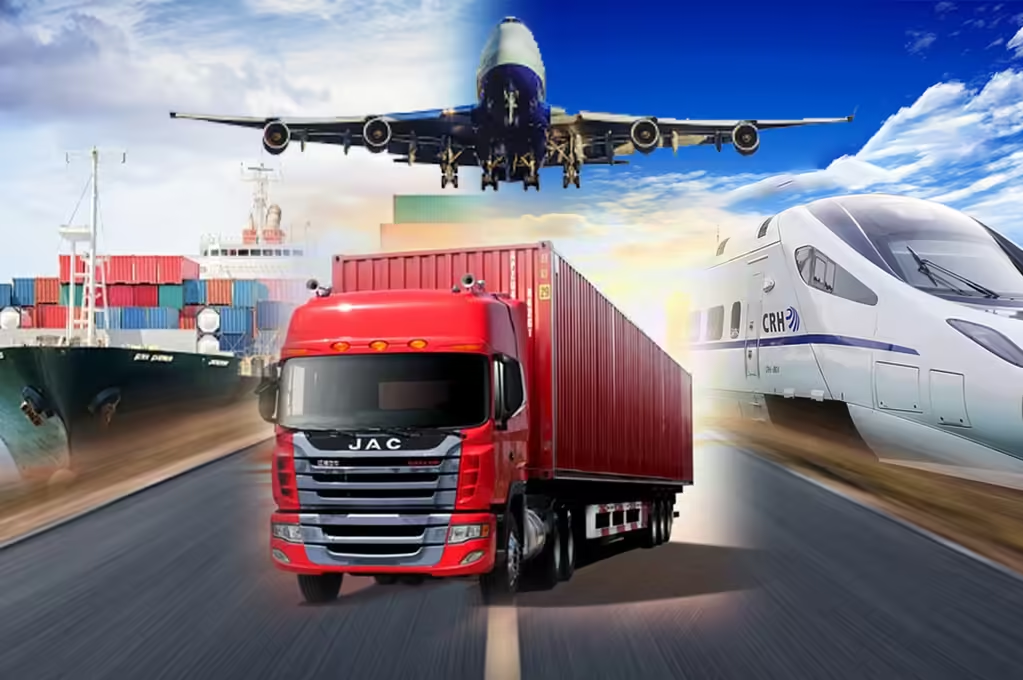In today’s interconnected world, the efficient and cost-effective movement of goods is paramount for businesses operating globally. One method that has gained significant traction in recent years is multimodal transportation. This article explores what multimodal transportation is, its benefits, and some of the challenges associated with this approach.
Understanding Multimodal Transportation
Definition
Multimodal transportation refers to the use of two or more modes of transport for the carriage of goods under a single contract. It combines different forms of transport such as road, rail, sea, and air to move cargo from origin to destination. This integrated approach allows for flexibility, speed, and cost savings, making it a preferred choice for many businesses.

Modes of Transport
The main modes of transport involved in multimodal transportation include:
- Road: Ideal for short distances and last-mile deliveries. Road transport is highly adaptable and can accommodate a wide range of goods, making it an essential component of the multimodal system.
- Rail: Offers high capacity and is suitable for long-distance movements. Rail transport is particularly useful for bulk and heavy cargo, providing a cost-effective alternative to road transport over longer distances.
- Sea: The most common mode for international trade, particularly for bulk and heavy cargo. Sea transport is the backbone of global trade, capable of handling large volumes of goods at relatively low cost.
- Air: Fastest but typically the most expensive option, best suited for urgent and high-value shipments. Air transport is crucial for just-in-time manufacturing processes and perishable goods where speed is essential.
Benefits of Multimodal Transportation
Efficiency and Cost Savings
One of the primary advantages of multimodal transportation is its ability to optimize the supply chain by selecting the most appropriate mode of transport for each leg of the journey. This leads to:
- Reduced transit times: By using faster modes for critical segments, multimodal transportation ensures that goods reach their destination as quickly as possible.
- Lower costs: Balancing between expensive but fast modes like air and cheaper but slower modes like sea can significantly reduce overall transportation costs.

ความยืดหยุ่นและความน่าเชื่อถือ
Multimodal transportation provides greater flexibility and reliability:
- Flexibility: Ability to switch modes based on changing conditions and requirements ensures that the most efficient and cost-effective combination of modes is always utilized.
- Reliability: Redundancy through multiple transport options reduces the risk of delays due to disruptions in one mode. If one mode experiences issues, another can be used to keep the supply chain moving smoothly.
Environmental Impact
Using multimodal transportation also has environmental benefits:
- Reduced emissions: By leveraging lower-emission modes like rail and sea, multimodal transportation can contribute to reducing the carbon footprint of logistics.
- Sustainability: Encourages sustainable practices and supports green logistics initiatives, helping businesses meet their sustainability goals while maintaining operational efficiency.
Defects of Multimodal Transportation
Complexity and Coordination Challenges
Despite its benefits, multimodal transportation comes with its own set of challenges:
- Coordination: Managing multiple carriers and modes requires sophisticated planning and coordination. The logistics of integrating different modes and carriers can be complex and requires specialized knowledge and expertise.
- Documentation: The paperwork involved can be complex and time-consuming, especially when crossing international borders. Ensuring compliance with various regulations and standards across different countries adds an additional layer of complexity.

Risk Management
Another challenge is managing risks throughout the supply chain:
- Cargo Security: Ensuring the security of goods during transit is a critical concern. Different modes of transport may have varying levels of security, and coordinating security measures across the entire journey can be challenging.
- Insurance: Coordinating insurance coverage across different modes and jurisdictions is another logistical challenge. Insurance policies need to cover potential risks at every stage of the multimodal journey.
Technological Integration
Effective implementation of multimodal transportation relies heavily on technology:
- Tracking Systems: Real-time tracking enables shippers and consignees to monitor the status of their cargo, improving visibility and responsiveness in case of delays or other issues.
- Integration: IT systems must integrate data from various modes to streamline operations and improve visibility. The integration of different systems and technologies is essential for efficient coordination and communication among all parties involved.
Multimodal transportation offers a robust solution for global supply chains, combining the strengths of different transport modes to create a flexible, efficient, and cost-effective logistics strategy. While there are challenges associated with complexity and risk management, the benefits of multimodal transportation make it a valuable tool for businesses looking to optimize their operations.

